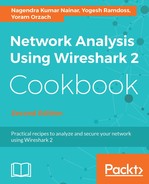When you monitor STP operations, you may be concerned by many topology changes. Topology changes are normal in STP, but too many of them can have an impact on the network's performance as it may cause MAC address aging, which results in unknown unicast flooding.
A topology change happens when a new device is connected to or disconnected from the network. You can see a topology change in the following screenshot:

When you see too many topology changes, the LAN switch ports that are connected to hosts that do not support STP (typically, end stations that users frequently power on and off) should be configured with the port fast feature (applied for Cisco switches; for other vendors, check out the vendor's manual).
If topology changes continue, check what could be the problem and who is causing it. Please be aware that even though most of the topology changes originate at the ports connected to the end stations, it can also be due to a link flap between two switches.
